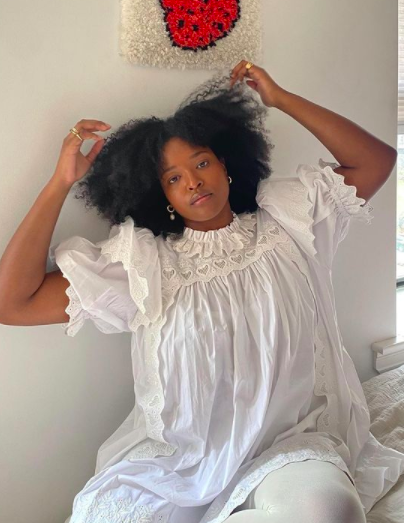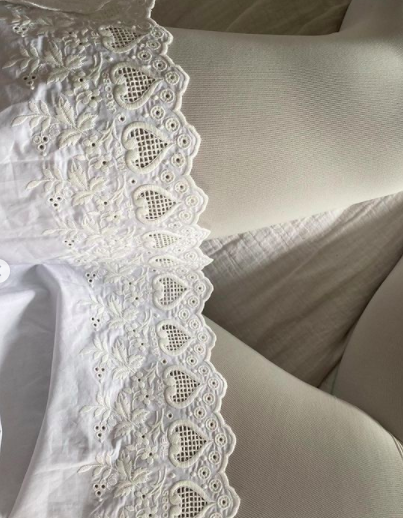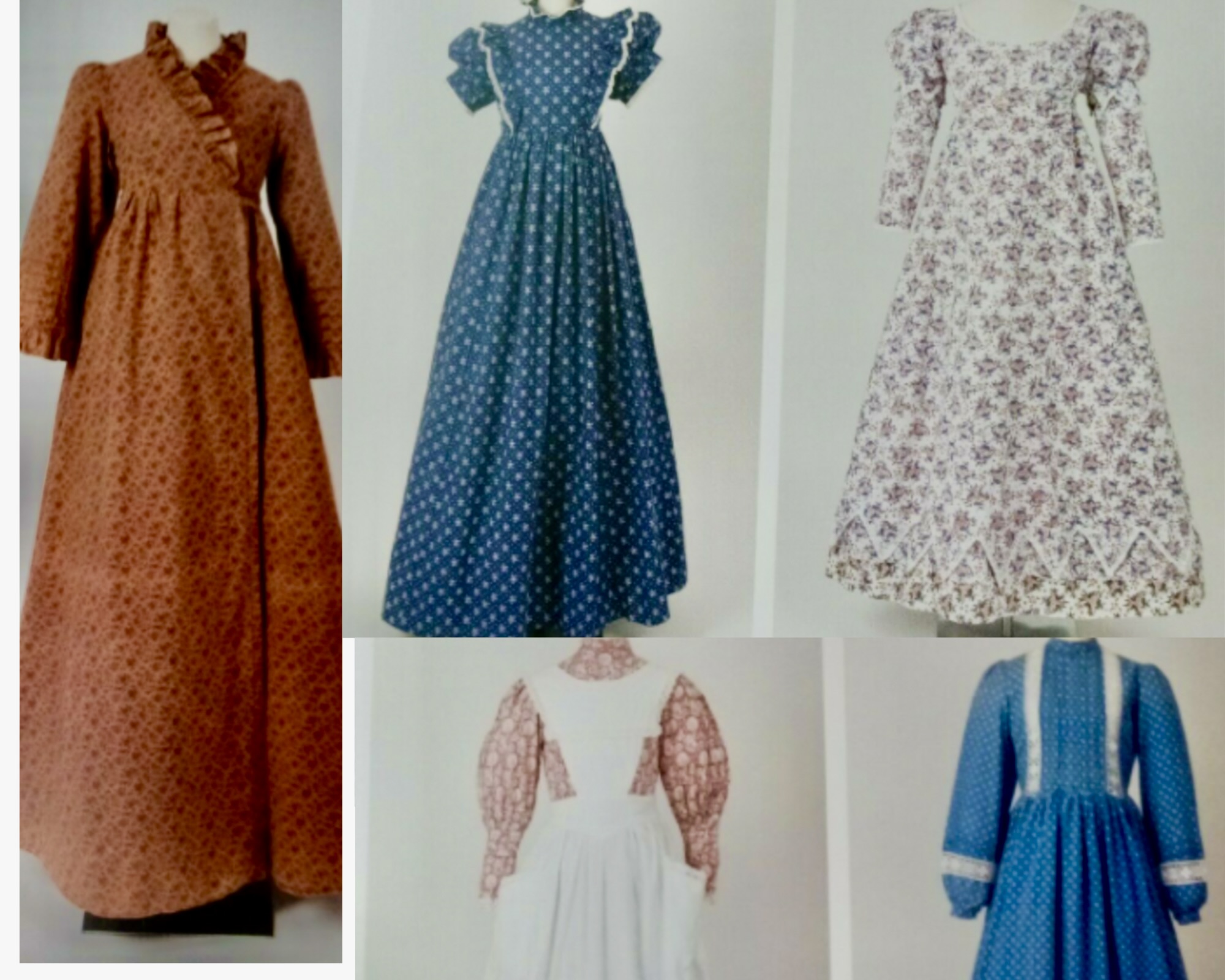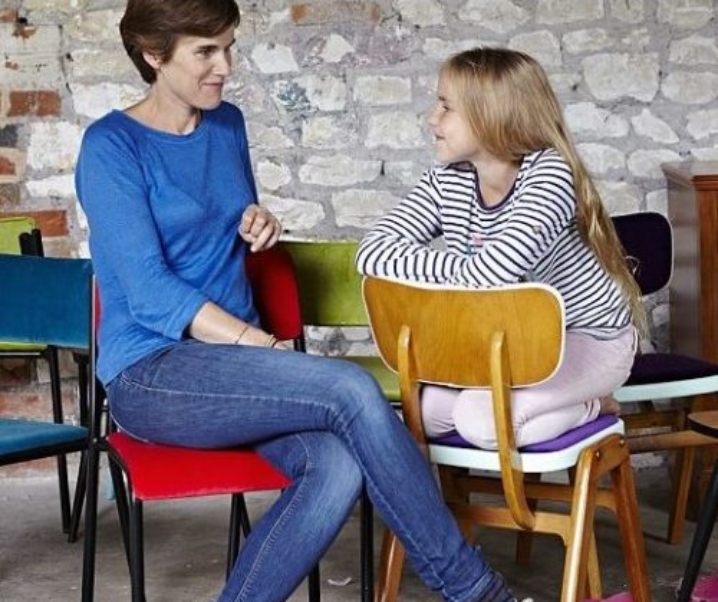When was the last time you wore a dress? Thought not. Like ties, heels and bras – dresses have been largely mothballed during lockdown.
I say largely because, while the little black dress has been gathering dust since March 2019, the wildly voluminous prairie dress has been sweeping across the reclaimed floors of many a lock-downed homestead.



According to fashion journalist Maya Coomarasamy, the prairie dress is back because we’ve fallen for its ‘romantic, bohemian feel’. She’s right – to a point. There are some fashionistas channelling their inner Jo March as they float around the local swings in their buckled T-bar sandals.
A lot of fans just love a massive frock because it’s akin to being swaddled in a cosy blankie. The prairie dress is hardy enough to survive both winter walks and infrequent washing and – hallelujah people – it can disguise any amount of lockdown bloat and it doesn’t require tights.
“It is simply but tastefully made, so that laundering it will not be too difficult or tedious, and so that it will not be too nice to wear every day.”
anonymous pioneer woman



You only have to browse the online store of any fashion retailer to see just how much passion for prairie dresses (short/long, flouncy/ austere, floral/gingham) has grown in lockdown.
It’s the only outfit you reach for if you get that irrational urge to make a face mask from sour dough (I think that’s right) .
“With all that’s going on in the world right now, it makes sense that this calming and cosy aesthetic is blowing up not only on social media, but also in our shopping habits,” says Kristen Bateman of Teen Vogue who argues that the prairie dresses is part of a #cottagecore trend; a hashtag which emerged to describe that insane itch to buy rolling pins, patchwork quilts and gardening gloves.
“It’s true that cottagecore is not just a fashion subculture, but an idealised lifestyle that goes hand in hand with floor-sweeping prairie dresses.”


Model Imani Randolph has no doubt why it’s the ideal fit for lockdown.
“During my time in quarantine, I’ve been gravitating towards comfort and simple pleasures,” Imani says of her desire to swaddle in loose-fit dresses.
“Bonus points for anything that doesn’t require me to wear a bra.”

- Jolly Volley has taken the pledge to buy only sustainable and secondhand clothes but she did order an H&M prairie style dress to see if the style would suit (the company offer free returns). As suspected, the square collar and drop waist cannot be worn anyone with voluminous boob-age. The dress has been returned…never to be spoken of again.
What is a prairie dress?

It’s a good question which I cannot answer. The plain fact is – it’s not a thing; it’s a trend.
The word ‘prairie’ was used a lot by fashion writers in 2018 to describe a type of dress – ankle-grazing, puffed sleeve, loose fit – which was all over the catwalk/style mags thanks to contemporary designers like Batsheva Hay.
In fact, the expression was not used by the original pioneer women; it wasn’t coined by Laura Ashley and even the designer credited with its reincarnation – Batsheva Hay – isn’t fond.
According to fashion and textile historian Megan Gillan, the description is a retronym; a contemporary name given to something in the past; in this case prairie was coined to describe (and market) a type of dress which gives a ‘nod to historical clothing’ worn by women in the American west.
Because it’s not an actual noun, it’s not the only name used by fashion retailers. Here’s just some of the alternatives you’ll need to know before you shop.
smock, bo ho/bohemian, midi/maxi, buffet, tiered, ruffle, ditsy, flounced, pinafore, #cottagecore #prairiecore, hitch, hippy, tunic, peasant, Victorian, puff-sleeve, pleated, floral…

Prairie dress – part one
1850s-1900
During the 19th Century, thousands of people migrated to the American West spurred on by the hope of a better life, the thirst for adventure and the lure of the unknown (source).
As for clothes, while guidebooks advised people to pack simple clothes made from easy to wash, durable fabrics, women would often embark on their journeys to the west with their finest frocks – silk gowns and white blouses – only to have them reduced to rags within months.

courtesy of the Laura Ingalls Wilder Historic Home & Museum

Replacement clothes were homemade and fit for purpose; crafted to suit the new environment and skills of the maker. Hemlines became shorter (so as not to drag in the mud) and the high collars, long sleeves and frilled bonnets were not stylish but practical ways to protect against the sun and winds. While some adopted a new-fangled ‘bloomer’ dress with a shorter skirt and trousers underneath (often gathered at the ankle by elastic), no one was using the name prairie to describe this new style of dressing.
“‘Women living on the American frontier wore attire which highlighted a combination of fashion and practicality,” says Megan Gillen, author of an academic paper ‘A History of the Prairie Dress 1850-2019‘.
‘Nothing worn by these women can accurately be called a prairie dress.”


If pioneer women had a uniform – a calico day dress and sun bonnet – it was due to circumstances not choice.
Clever seamstresses would often spend hours embellishing plain clothes – adding ruffles, scalloped edging, frills and multiple layers of starched petticoats – in an attempt to ape the fashions back in the east. Bonnets were decorated with tulle, lace, flowers and fruit illustrating that, even in the most extreme living conditions, pioneer women were longing to make their workaday clothes beautiful.
Which makes it all the more inconceivable that a romanticised version of this dress – crudely fashioned from coarse and often scratchy fabric with canopied skirts held aloft by old petticoats and potato starch – would become the fashion sensation one hundred years later.

Prairie dress – part two
1970s Laura Ashley
Dresses worn by women in the American west may not have made it to these shores but for a housewife from Wales.
It was during the 50s that Laura Ashley (1925-85), inspired by a quilting and patchwork exhibition, taught herself how to transfer traditional patterns on to fabric with the help of library books and a silk screen printer made by husband Bernard.
Her son Nick recalls how his mother began producing small print runs of scarves on the kitchen table of their home in London’s Pimlico and how they would be ‘hanging up to dry all over the flat’.

The first order – John Lewis ordered 20 scarves – was enough to convince the couple they had a business. Nick Ashley recalls his dad taking a suitcase full of scarves to Harrods and the phone ringing for a repeat order before he’d had chance to arrive home on the bus.

The fledgling company moved into another gear entirely in 1966 when – after moving the manufacturing base to Carno in mid-Wales – Laura Ashley started making dresses.
‘We find anything with a nostalgia about it sells; it’s always a winner. They’re not particularly clothes for making a splash in a dramatic place; they’re simple garments to wear at home, and when you get home perhaps you need the security of nostalgia.’
Laura Ashley

Laura Ashley loved the traditional styles she’d seen on Victorian clothes in museums and knew they’d appeal to people who just couldn’t buy into the racy, sexy, urban fashions of the 60s – as typified by the mini skirt.
“I had to do something completely different as I knew in my heart that was not what most people wanted,” Laura Ashley said of her designs.
“I sensed that most people want to raise families, have gardens and live life as nicely as they can. They don’t want to go out to nightclubs every night and get absolutely blotto.”

The public certainly agreed. It’s said that the Laura Ashley shop on London’s Fulham Road sold 4,000 dresses in its first week. By the end of the 70s – fuelled by a mania for billowing frocks which looked handmade thanks to the simple shapes and traditional fabrics – the Ashleys had opened 70 shops across the world.

Looking at the 1970s dresses in the catalogue which accompanied a Laura Ashley exhibition at Fashion Museum Bath in 2013 (see above), it’s clear Laura Ashley was drawing heavily on Victoriana – including mid-western pioneer clothing – to use in her designs.
“I reckon that women looked their best at the turn of the (20th) century” Laura explained.
“No one wants to live with a design that jumps out at them.”

Laura Ashley didn’t set out to invent a ‘prairie’ dress Laura Ashley. She was simply cherry-picking details from the period clothes she loved – high collars, leg o’mutton sleeves, ruffled skirts and all the trimmings – to create her own (wildly romanticised) versions of timeless classics which would, in her words, ‘last forever.’



Shop the look
Demand for the vintage Laura Ashley frocks has sky-rocketed with the most prized – 1970s prairie dresses – changing hands for hundreds of pounds through online retailers – search Laura Ashley on eBay, Etsy or find independent vintage traders through #avirtualvintagemarket
Expect to pay £100-300 for vintage 70s (I’ve seen one listed for in excess of £500) whereas 80s dresses (same style, shorter hemlines) can normally be bought for less than £100. Buyer beware; Laura Ashley 1970s clothes are made for 1970s measurements – they’re cut very small so you’ll have to size up.

1970s blue prairie with lace detailing £122, 1970s daisy print £122.

The Laura Ashley dresses were all sold on eBay in January 2020.
NB; Laura Ashley PLC was put into administration in March 2020. In April, investment firm Gordon Brothers acquired Laura Ashley’s global brand and homewares will be available in the UK through Next from spring 2021 with clothing to follow at a future date.

Prairie dress – part three
2018-on
Step-forward Batsheva Hay; a former New York lawyer who turned designer when she found herself hankering after new versions of the Laura Ashley clothes she’d ‘worn my whole life.’
“I did not feel that what I saw in stores was smart, weird and comfortable in the way that I wanted,” she explained in an interview with AnOther.


The only thing I liked to wear was vintage, and I thought, ‘Why can I not find something new and fresh that is as good as what I find in a flea market?”
In 2016, Batsheva gave a floral pinafore to a dressmaker with instructions to make ten from a variety of vintage fabrics. Her friends loved them – as did the Instagram community – and she was eventually offered a deal to produce 500 dresses for Matches Fashion.

Batsheva’s signature dresses may reference women of the ‘prairie’ in style; but not attitude.
“I like the idea of the frontierswoman,” she told Aaron Hicklin of The Guardian.
“(I’m) in this weird place of using these very old-fashioned, almost kitschy styles, and then being tough with them.”
She aims to; “Extract the strong and beautiful aspects of those styles while rejecting antiquated notions of womanhood,”


Batheva’s take on the prairie dress – bold fabrics, metallic ruffles worn with with sunglasses and sass – is a world away from the prim and proper frocks of Laura Ashley and a universe away from the workaday clothes of early those pioneer women toiling from sun up to sun down.
Small wonder the New York Times dubbed someone who wears her prairie dress with ‘Dr. Martens…and a knowing smile’ Urban pioneer girl.
Shop the look

Batsheva available online at Matches Fashion; flocked paisley dress £470 and Grace floral print puff-sleeved blouse, £210
How to wear
Take one dress

+









Sources;
Feature photograph; Little Women (PBS) PHOTOGRAPH BY JASON BELL












